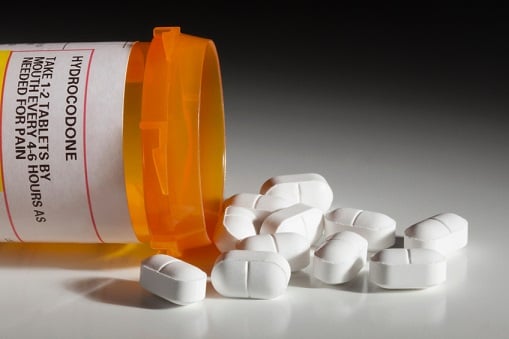Desperate for relief, some patients are turning to potentially lethal drugs

Because of new national guidelines that advise doctors to taper the supply of opioids for patients who have gone beyond a maximum dose, more than 300,000 Ontarians have found their prescriptions cut back significantly. For some, this means intolerable pain that they can’t relieve — at least, not without turning to a dangerous alternative.
Pain-management experts are raising alarms as some patients in Ontario, desperate for relief, are being forced to get street drugs to make up for their diminished prescription-opioid supply. “We're causing a lot of harm to people who actually had never gone to the street for an opioid,” Dr. Hance Clarke, a physician at Toronto General Hospital, told CBC News.
In November, the College of Physicians and Surgeons of Ontario (CPSO) investigated suspicious prescribing practices by some doctors. The college discovered certain patients taking “extremely high doses” of prescription opioids. Months afterward, a cap was introduced — but the options for alternative therapy are limited.
“We know we need to educate our doctors, and that will come,” said Clarke, whose clinic is the only one in Ontario that has a process to ease patients off high-dose medication. “But we have 300,000 individuals out there, just in Ontario alone ... that we need to get safely from where they are to where they need to be.”
The scale of the problem is unknown. According to the CBC report, neither the CPSO not the province is tracking the long-term impact on the affected patients. But according to some who work with drug users on the street, the changes have resulted in a growing pattern of patients previously on managed medication taking street drugs.
One man, who spoke on the condition of anonymity, told the news outlet that he suffered from severe pain because of illnesses he’d had since age 12. He’d managed it with prescription drugs, but because he developed a high tolerance to them, he eventually needed a high dose. “But my quality of life was great,” he said. “My pain was being managed quite well.”
Unfortunately, his name ended up on a list of patients that his doctor was ordered to cut back prescriptions for. His dosage was cut abruptly, and he soon started to seek pain relief on the street. What was once a $2-a-day regimen under the Ontario Drug Benefit program — which no longer covers certain high-dose opioids — has turned into an $80 daily heroin habit.
He said he has overdosed twice already. And while he’s aware that some street drugs contain carfentanil, a lethal drug 10,000 times stronger than morphine, he is unable to stop.
According to Peter MacDougall, director of pain management at the Ottawa Hospital, patients who find it hard to get used to lower doses need to be referred to a specialized pain clinic. But for non-cancer patients, the wait can take months: according to one Ottawa clinic contacted by CBC News, it could take anywhere from six months to a year to get a consultation.
Related stories:
Time for Canada to discuss drug legalization, says Opposition health critic
Could pot combat opioid addictions?
Pain-management experts are raising alarms as some patients in Ontario, desperate for relief, are being forced to get street drugs to make up for their diminished prescription-opioid supply. “We're causing a lot of harm to people who actually had never gone to the street for an opioid,” Dr. Hance Clarke, a physician at Toronto General Hospital, told CBC News.
In November, the College of Physicians and Surgeons of Ontario (CPSO) investigated suspicious prescribing practices by some doctors. The college discovered certain patients taking “extremely high doses” of prescription opioids. Months afterward, a cap was introduced — but the options for alternative therapy are limited.
“We know we need to educate our doctors, and that will come,” said Clarke, whose clinic is the only one in Ontario that has a process to ease patients off high-dose medication. “But we have 300,000 individuals out there, just in Ontario alone ... that we need to get safely from where they are to where they need to be.”
The scale of the problem is unknown. According to the CBC report, neither the CPSO not the province is tracking the long-term impact on the affected patients. But according to some who work with drug users on the street, the changes have resulted in a growing pattern of patients previously on managed medication taking street drugs.
One man, who spoke on the condition of anonymity, told the news outlet that he suffered from severe pain because of illnesses he’d had since age 12. He’d managed it with prescription drugs, but because he developed a high tolerance to them, he eventually needed a high dose. “But my quality of life was great,” he said. “My pain was being managed quite well.”
Unfortunately, his name ended up on a list of patients that his doctor was ordered to cut back prescriptions for. His dosage was cut abruptly, and he soon started to seek pain relief on the street. What was once a $2-a-day regimen under the Ontario Drug Benefit program — which no longer covers certain high-dose opioids — has turned into an $80 daily heroin habit.
He said he has overdosed twice already. And while he’s aware that some street drugs contain carfentanil, a lethal drug 10,000 times stronger than morphine, he is unable to stop.
According to Peter MacDougall, director of pain management at the Ottawa Hospital, patients who find it hard to get used to lower doses need to be referred to a specialized pain clinic. But for non-cancer patients, the wait can take months: according to one Ottawa clinic contacted by CBC News, it could take anywhere from six months to a year to get a consultation.
Related stories:
Time for Canada to discuss drug legalization, says Opposition health critic
Could pot combat opioid addictions?



